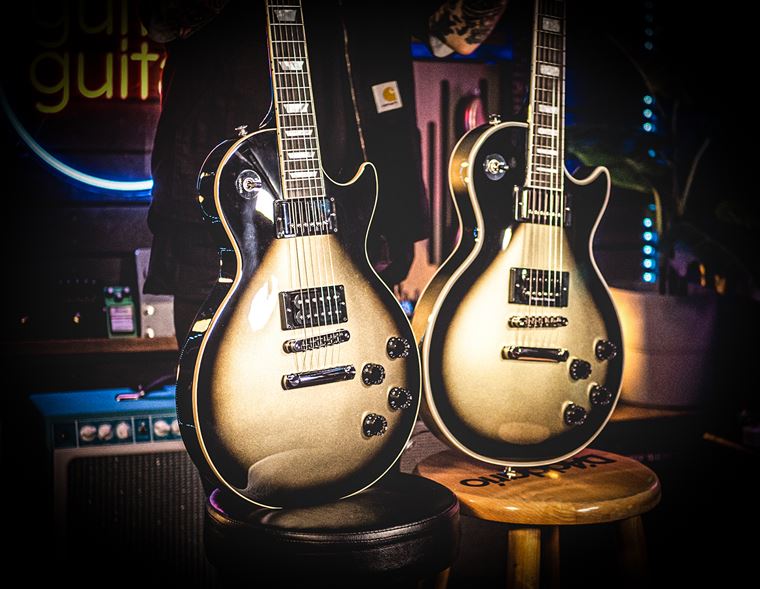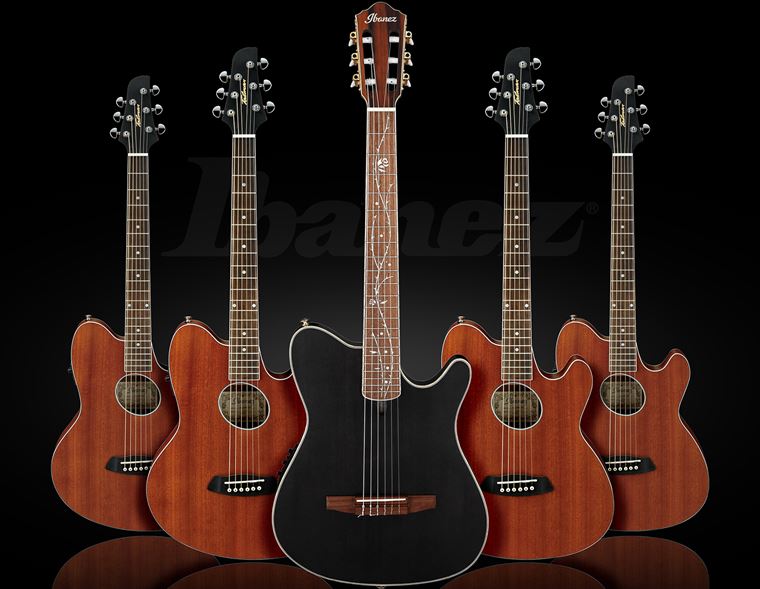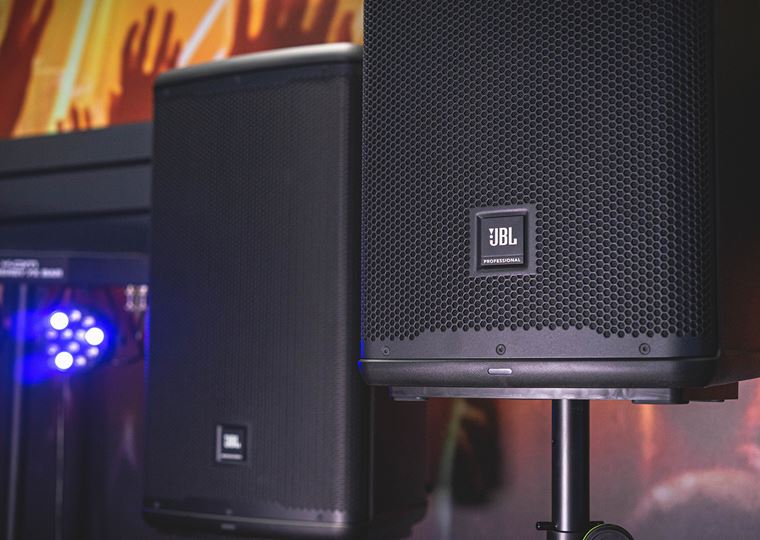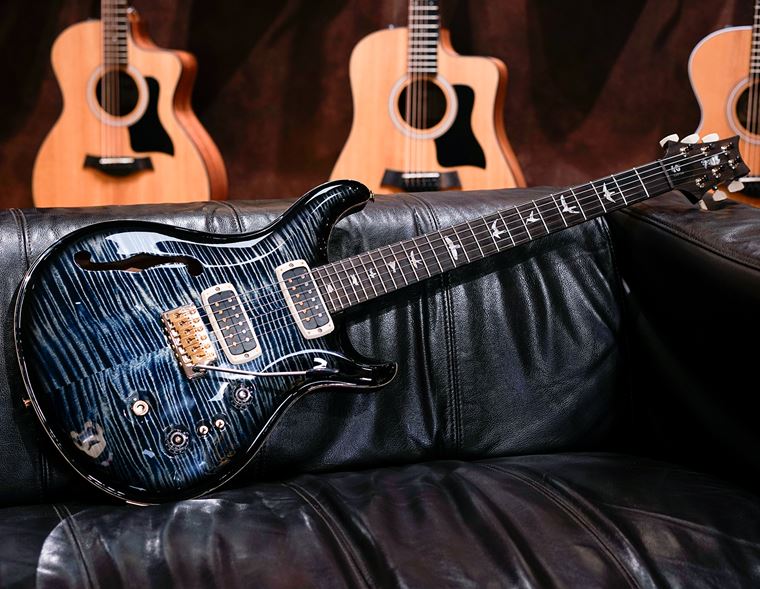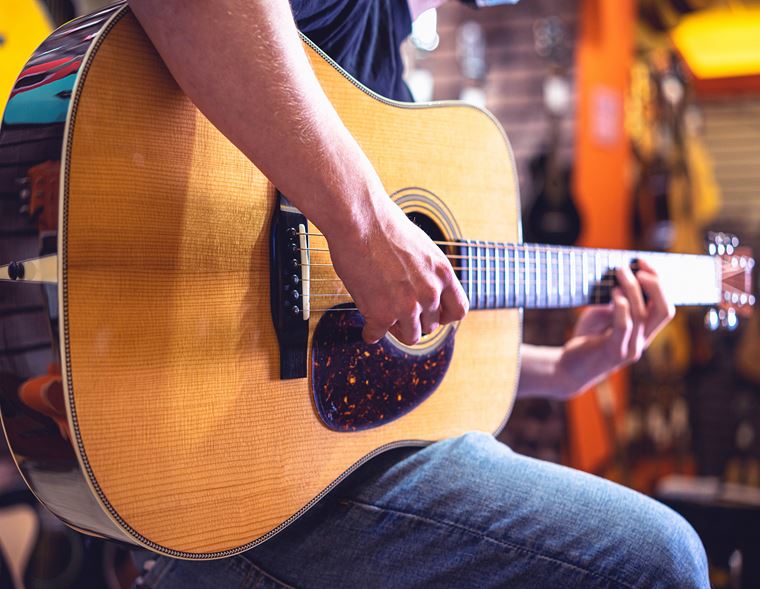Epiphone vs Gibson: What Is The Difference Between Them?
Gibson and Epiphone are two brands that inspire a lot of debate. Most readers will understand the idea of Gibson being the ‘parent’ company and Epiphone being the official licensed replicas, but is there more to it than that? Is that, in fact, how it has always been? Are there fundamental differences between both brands, given that Gibson seem to be significantly more expensive?
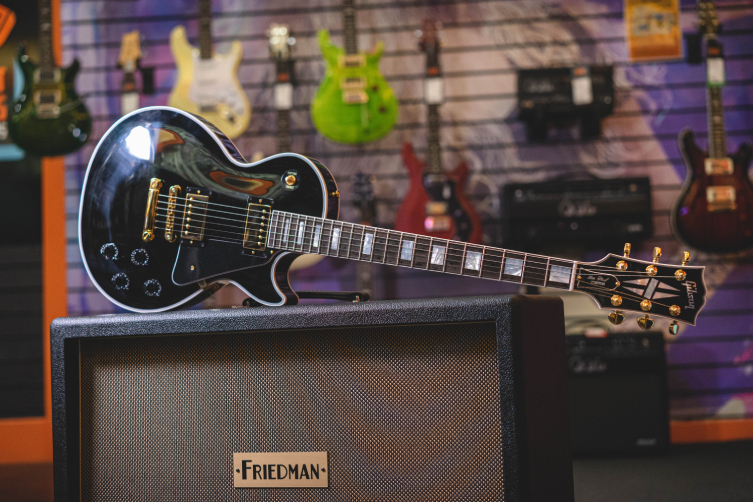
Well, we have answers to all of these questions, and this blog is the place to find those answers! Read on, curious friend, and find out what really separates these two major brands…
Country of Manufacture
We’ll start with the country of manufacture, since it seems to be something that is very often remarked about online, in shops and in rehearsal rooms.
Gibson guitars are all made in the USA. The electric guitars are built in Nashville, Tennessee, whilst the acoustics are built up in Montana.
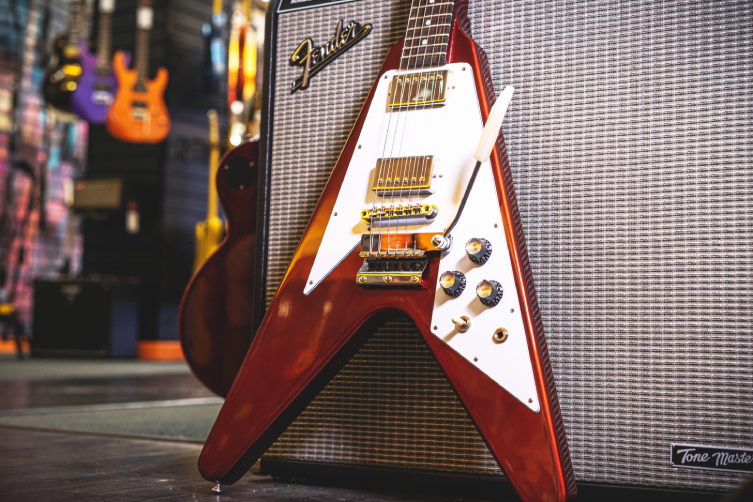
Epiphone are built in an exclusive factory in China. By exclusive, we mean that they are not made in a facility that builds guitars for several brands, like for example what Cor-Tek or Samick do. This has been the way since around 2004: before then, Epiphone were made in Korea as well as some other Chinese facilities, all of which built guitars for a number of different brands. Since roughly 2004, the Epiphone facility has made only Epiphones.
Is this significant? Well, yes, to be honest. A well made guitar is a well made guitar no matter where it was made, but labour coasts in the USA are far higher than in China, so that’s a difference straight away. Other factors inform the cost of each brand, as we’ll see, but it’s still a significant fact that Chinese-made guitars are, on the whole, significantly cheaper to produce than those in America.
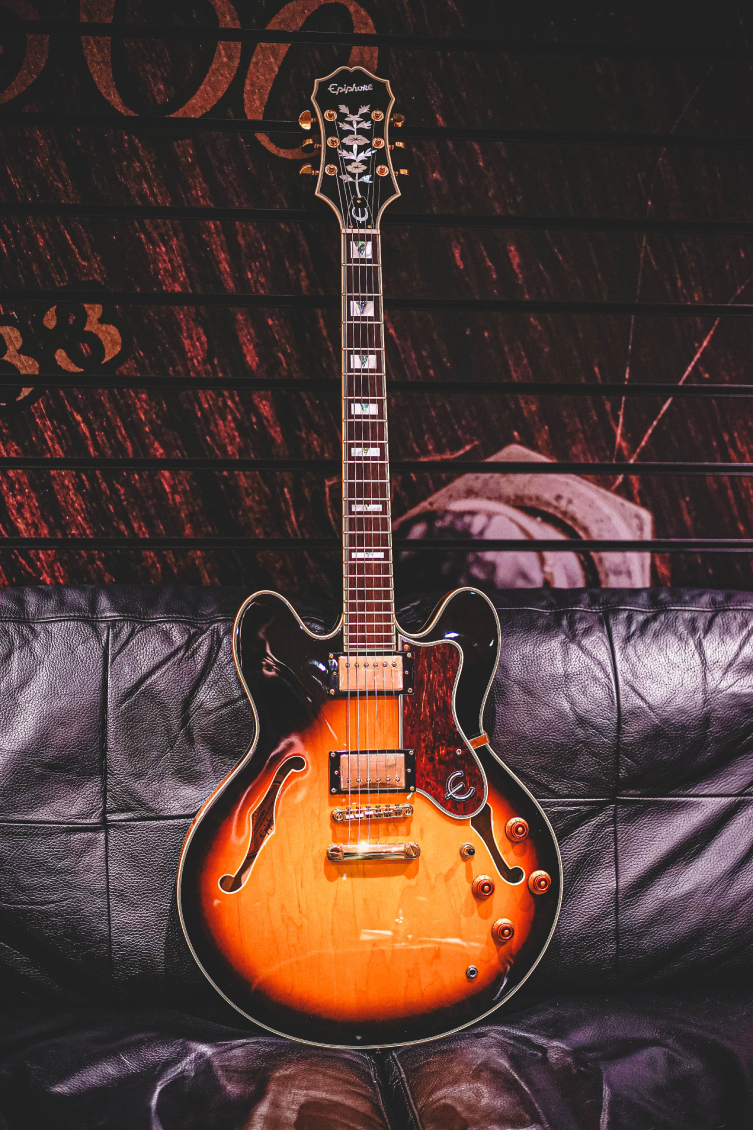
Does this make American guitars better? Not in and of itself, no, but that fact remains that most USA-made brands also feature a higher level of workmanship and hands-on building. These elements generally do improve a guitar. This is true of Gibson, and certain factors (particularly the finishing, which we’ll come back to) contribute to mean that more time is spent on a typical Gibson guitar than its Epiphone equivalent. This often translates to a higher quality instrument.
The Old Rivalry
Heritage plays a huge part in the appeal of any guitar brand. We alluded to this at the beginning of the article, but we maybe threw out a slight red herring there. The truth is, Epiphone are actually an older company than Gibson, having began 150 years ago in Greece. Gibson, on the other hand, began in 1894 in Kalamazoo, Michigan, making them the younger sibling, historically speaking.
In the roaring pre-war years of the 1920s and 30s, Epiphone were in fact Gibson’s direct rival in terms of hollowbody archtop guitars. In many ways, Epiphone led the way until owner Epi Stathopaulous’ death, when the company lost steam and sold out to Gibson in 1957.
Is any of this important to today’s discussion, though? Well, we’d say so, since many of the so-called ‘original’ Epiphone models (we’re talking about the Casino, the Wilshire, the Coronet etc) were all designed and built under the ownership of Gibson. They may have been exclusive to Epiphone but that was only in the sense of Gibson keeping them as separate designs. Production of these guitars remained in the USA until the 70s when Epiphones began being built in Japan.
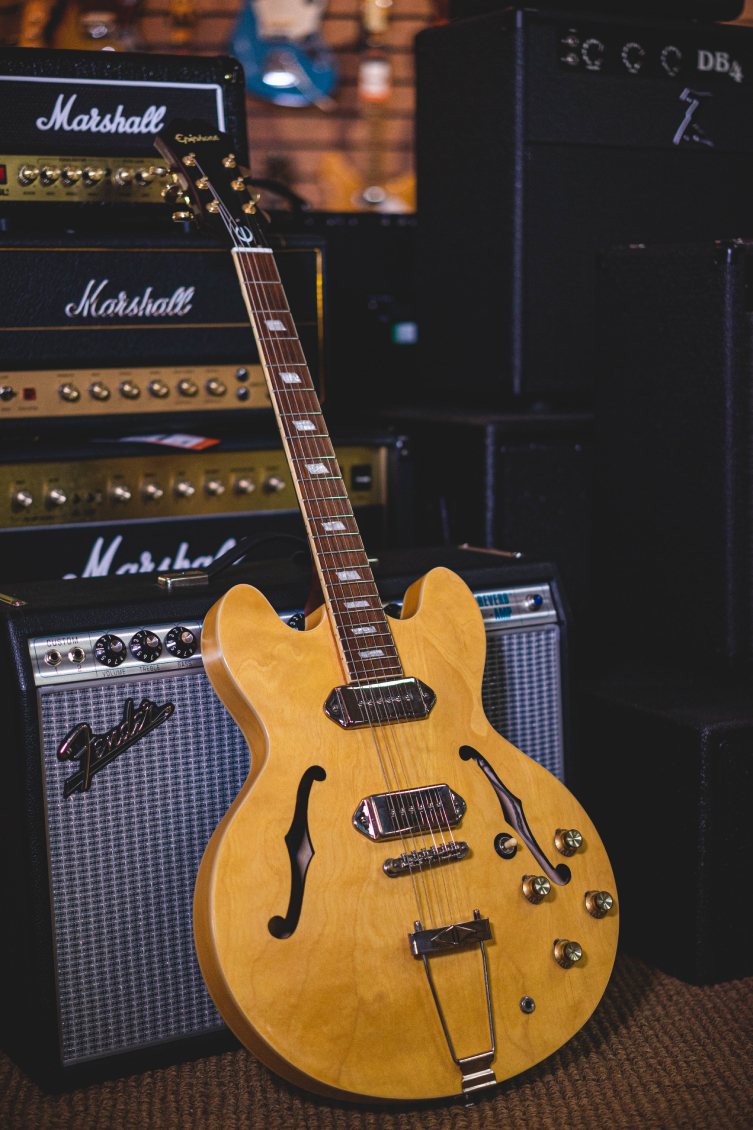
What we’re saying here is that the old rivalry is quite interesting for fans but really hasn’t really played a practical part in much for over half a century now. Most every Epiphone out there in the world that we know and love has been created since Gibson owned the company. In other words, there is no real rivalry there at all: they are all ultimately GIbson guitars one way or another. The old rivalry has given way to Epiphone being the only ‘official’ Gibson replicas on the planet.
Materials
You’d expect to get better materials in a more expensive guitar, right? This is largely true here. There are obvious things like the fingerboards, where Epiphone substitute expensive (and rare) rosewood and ebony for less precious and more abundant timber like laurel.
Both brands make prominent use of mahogany, but we’ve often found comparable Gibson models to be lighter than the Epiphones, not to mention the fact that Epiphone bodies tend to be made up of more pieces joined together. Whilst this doesn’t necessarily affect the tone, it’s certainly a cost-cutting measure.

Materials like pickup magnets, switches and pots are all areas where Epiphone can be economical by choosing cheaper variants. In particular, this is an important consideration when looking at brand information like ‘Gibson-designed’ pickups rather than ‘Gibson pickups’. The latter will be handwound in Nashville with better quality magnets etc, whilst the former will be built in Epiphone’s Chinese facility to the same design as the American pickup but with less costly materials and to a quicker schedule. Your ears will tell you if this all makes any odds to you, but those are the actual differences. Epiphones can have either type of pickup (or indeed neither), so make sure you read the spec carefully and not just skim it for the all-important ‘Gibson’ word!
But are Gibson pickups better than Epiphone ones? In our opinion, we’d say almost always yes, for all the reasons stated, but that’s a personal opinion, not a fact! The fact is, they are different: the opinion is that we hear better sounds from Gibson pickups. You may agree and you may not!
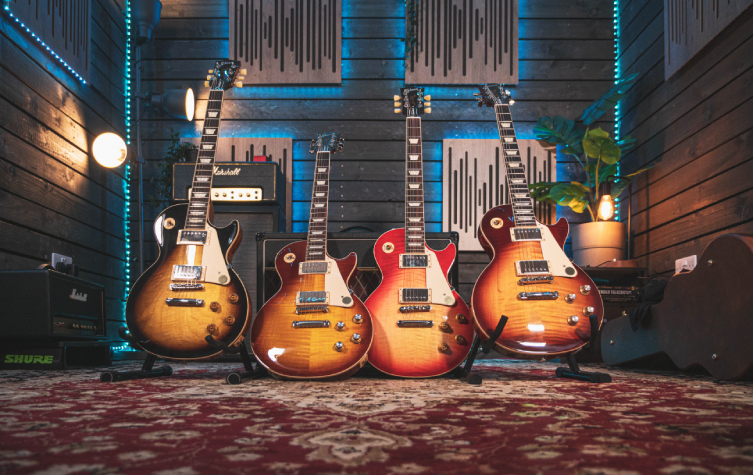
Build Quality
To some extent, the building of all electric guitars has to involve some degree of hand-building: it’s just a matter of how much, compared to what’s done with machines. In terms of Epiphone and Gibson, Epiphone is more ‘mass-produced’, so more of the processes will be machine based. The processes that aren’t machine-based or automated will be curtailed by strict productivity quotas, so there’s limited time available for builders to work on each instrument before it’s moved on to the next step of the assembly line. This keeps things affordable to the end buyer.
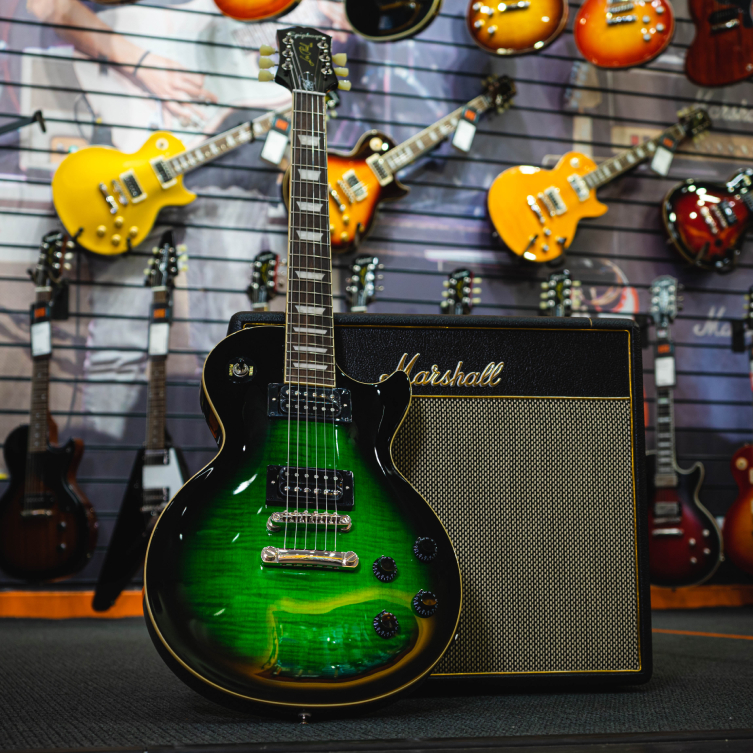
For Gibson, there is definitely a larger element of hand-building involved. Initial woodcutting will be done via CNC machines, but shaping, sculpting and more detailed crafting is all taken care of by hand. Epiphone use more budget-conscious materials, where Gibson use more expensive (better looking and more resonant, typically) cuts of wood for their guitars. Mahogany is still mahogany whether it’s used for a Gibson Les Paul or an Epiphone Les Paul, but wood is graded and sorted into higher and lower levels of quality. Gibson uses better grades of timber, which adds to the cost.
We mentioned earlier that Epiphone guitars are built in a dedicated facility. This is important because Epiphone can then determine and monitor their desired level of quality control, instead of sharing facilities, materials, staff and assembly lines with dozens of other builders, some of whom will have specified lower production costs for their guitars. This type of thing has a habit of ‘bleeding through’ into other brands’ products. Keeping things all ‘on the level’ in terms of quality expectations and procedures help to make Epiphone guitars consistent in terms of build quality.
Finish
The finish used for each brand of guitar is actually quite a big deal, though it may not be so obvious to begin with. Basically, it goes like this. Most electric guitars made in the world today use a tough, glossy chemical finish such as polyurethane. It’s hard-wearing, looks new for years and can be applied quickly since it dries fast. Epiphone guitars all have polyurethane finishes.
Gibson, on the other hand, usesuse nitrocellulose lacquer to finish all of their guitars. Nitrocellulose is thin, fragile and requires days of drying before recoating and re-sanding. In short, it’s a time-consuming business to finish a guitar in ‘nitro’. Time-consuming equals expensive. So why does Gibson do it? Well, the fragility of nitrocellulose means that it ages in a beautiful way, thus adding charm and personality to the guitar over the course of its life. Nitro has a particular feel to the touch, too, and a pleasant smell, both of which many players love. Aficionados want nitro because that’s how Gibsons have always been finished, and tradition is huge with guitar fans.
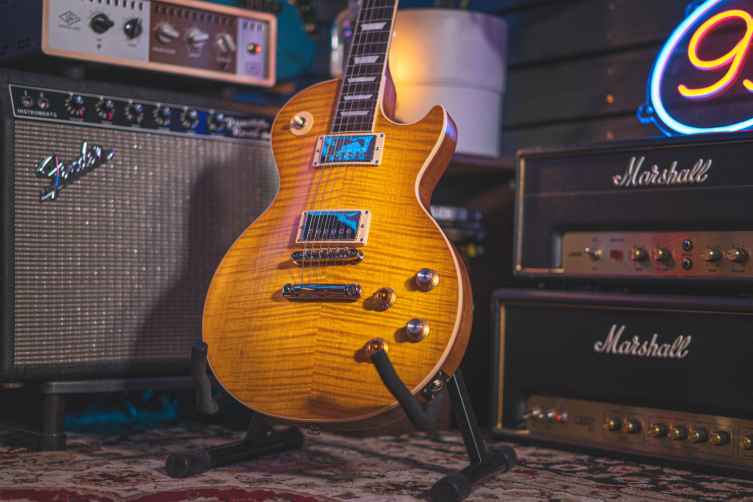
Some people think the thinner nitro coat helps the guitar’s body breathe and resonate better, too. Nitrocellulose can be polished up to a glossy sheen just like a ‘poly’ finish, but it can also be used for matte and ‘worn’ finishes too. Gibson make use of all three in different contexts, but all are time-consuming and expensive.
Sound & Feel
We’d hate you to think we’re copping out by dodging these particular areas, but really: the whole notions of sound and feel - certainly in terms of ‘better’ and ‘worse’ - are entirely subjective. Neck carves are different, they are not ‘better’, just as one pickup’s sound is never really better or worse these days but just different. You might not like a loud ceramic pickup, for example. You might think it’s cheap sounding and lifeless, but the next player may find that it’s their holy grail sound because they’re aiming for an entirely different thing.
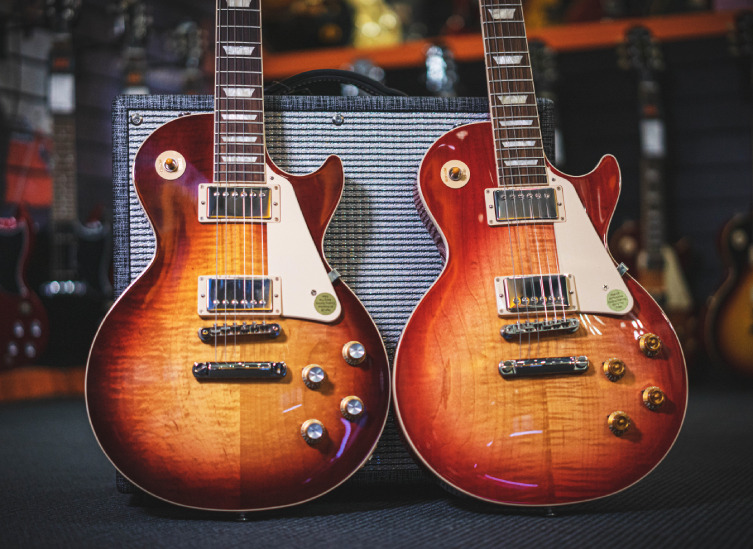
We might say that it’s normal to hear more depth and detail in the sound of a nice Gibson Les Paul Standard when compared with its Epiphone cousin, but again, that’s subjective! Since we can’t objectively measure these things, we’ll say that all Gibson and Epiphone guitars sound really good - BUT - an Epiphone Les Paul Standard 50s does NOT sound exactly the same as a Gibson Les Paul Standard 50s. They do not feel the same and they do not sound the same. You make up your mind if that means the Gibson is better. We’d say we hear more of the signing upper mids in the Gibson, and find more harmonic overtones and sustain, but that’s our interpretation.
Value
Value is a misleading one, isn’t it? Let’s take the people’s champion itself: the SG. On the face of it, a Gibson SG Standard at time of writing is £1549, whereas an Epiphone SG Standard is £399. That’s nearly four times cheaper! Surely that suggests that the Epiphone displays better value?
Well, yes it does (£399 for that guitar is real value, to be frank), but we may actually be getting our comparisons a bit messed up here. Let’s look at things this way: the most expensive ‘ES’ Epiphone model is the Joe Bonamassa 1961 ES335, which (again at time of writing) comes in at £1149. Not cheap! The Epiphone Tony Iommi SG model is currently £899.
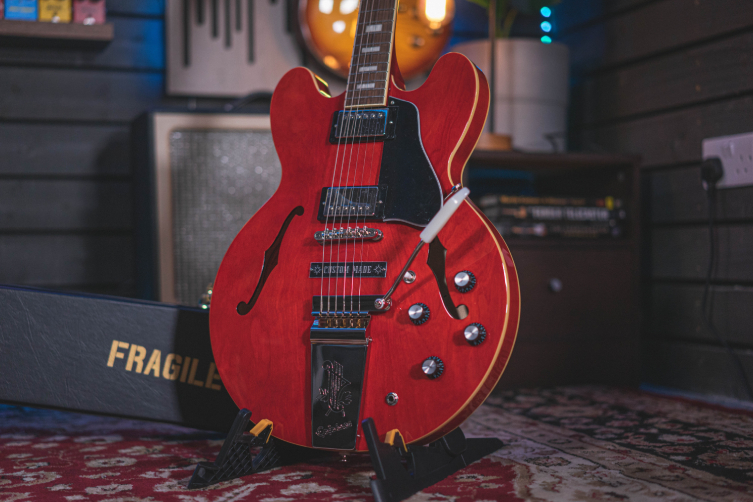
Now compare these with one of the most affordable Gibson USA models, the SG Tribute. It’s £1099, so two hundred quid dearer than the Iommi Epiphone and actually £50 cheaper than the Bonamassa 335! Which brand is now displaying better value?
It depends on your perspective, and what you’re looking to get really, doesn’t it? Let’s look at this another way, by pitting the Gibson SG Standard - one of Gibson’s best selling guitars - versus the equivalent ‘standard’ US-made guitar from Gibson’s biggest competitor. Current prices for a Fender American Pro II Strat are between £1599-1699, with Telecaster models coming in at between £1699-1799 depending on options and finishes. Now, this blog is hardly about which is ‘better’ - again, it’s entirely subjective - but it is fair to note that the glued neck and carved body of a Gibson SG, not to mention the nitro finish, would indicate that the SG is a much more expensive guitar to manufacture than the slab bodied, bolted neck fenders with their sizeable body routings hidden by plastic pickguards. This maybe puts the perceived value of a GIbson guitar onto a more level playing field.
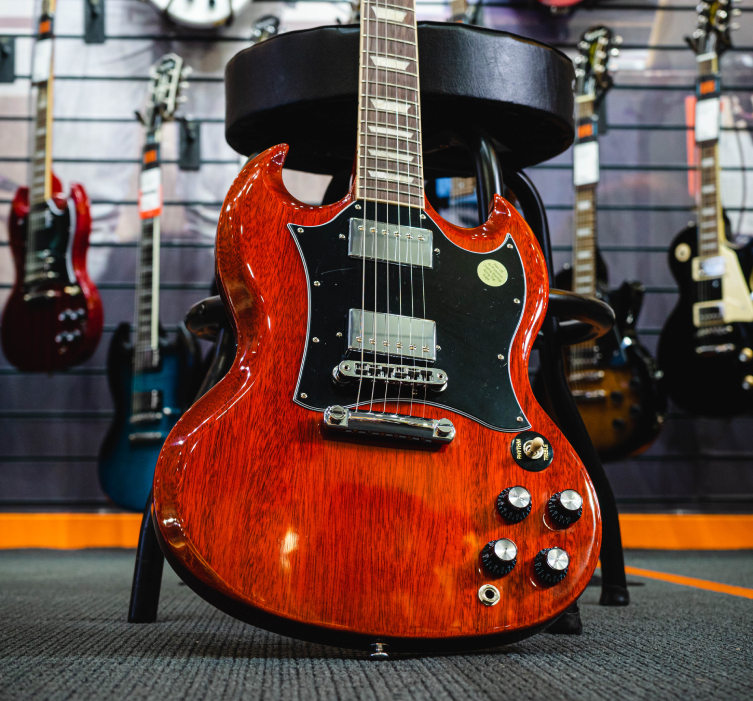
For fairness, let’s include the Les Paul. The Gibson Les Paul Standard is more expensive than the SG, with current 50s and 60s Standards priced currently at £2399. That is a good deal more expensive than the SG and both Fenders. That said, most of us accept that the addition of the carved maple top incurs extra cost (the timber, the additional cutting, the carving and also the finishing, which is almost always a separate colour to the sides and back), as does the significantly thicker mahogany body. Most Les Paul bodies have binding around the edges too, another time-consuming job. So, it’s a fair point that a Gibson Les Paul is an altogether dearer thing to make than a Fender Telecaster, even if the USA-based labour costs etc are comparable.

If you can live without the binding, then a USA-made Gibson Les Paul Tribute is actually coming in at £1099 right now. That’s £450 cheaper than the SG, less than half the price of a Les Paul Standard and, significantly, £50 less than the top-line Epiphone Joe Bonamassa ES-335! This is for a bona-fide American-made Gibson Les Paul!
So, value is most definitely a matter of perspective here: most Epiphones are great value, and many Gibsons are also great value.
Gibson and Epiphone
So there you have our breakdown of just what the real differences are between Gibson guitars and their Epiphones siblings. That next time someone tells you that Epiphones are inferior, you’ll know that this often isn’t the case; they are just made to a different plan. And the next time somebody tells you that Gibsons are prohibitively expensive, you’ll know the truth behind that, too: it very much depends on which Gibsons you’re talking about.
Is it better to get a top-end Epiphone over a lower-priced Gibson? Sure, if you like it more! But assess your budget and play a variety of guitars within that budget without going solely on superficial details like the name on the headstock or the country of manufacture. Let your ears and hands tell you what they prefer: they are far more trustworthy when it comes to choosing guitars!






